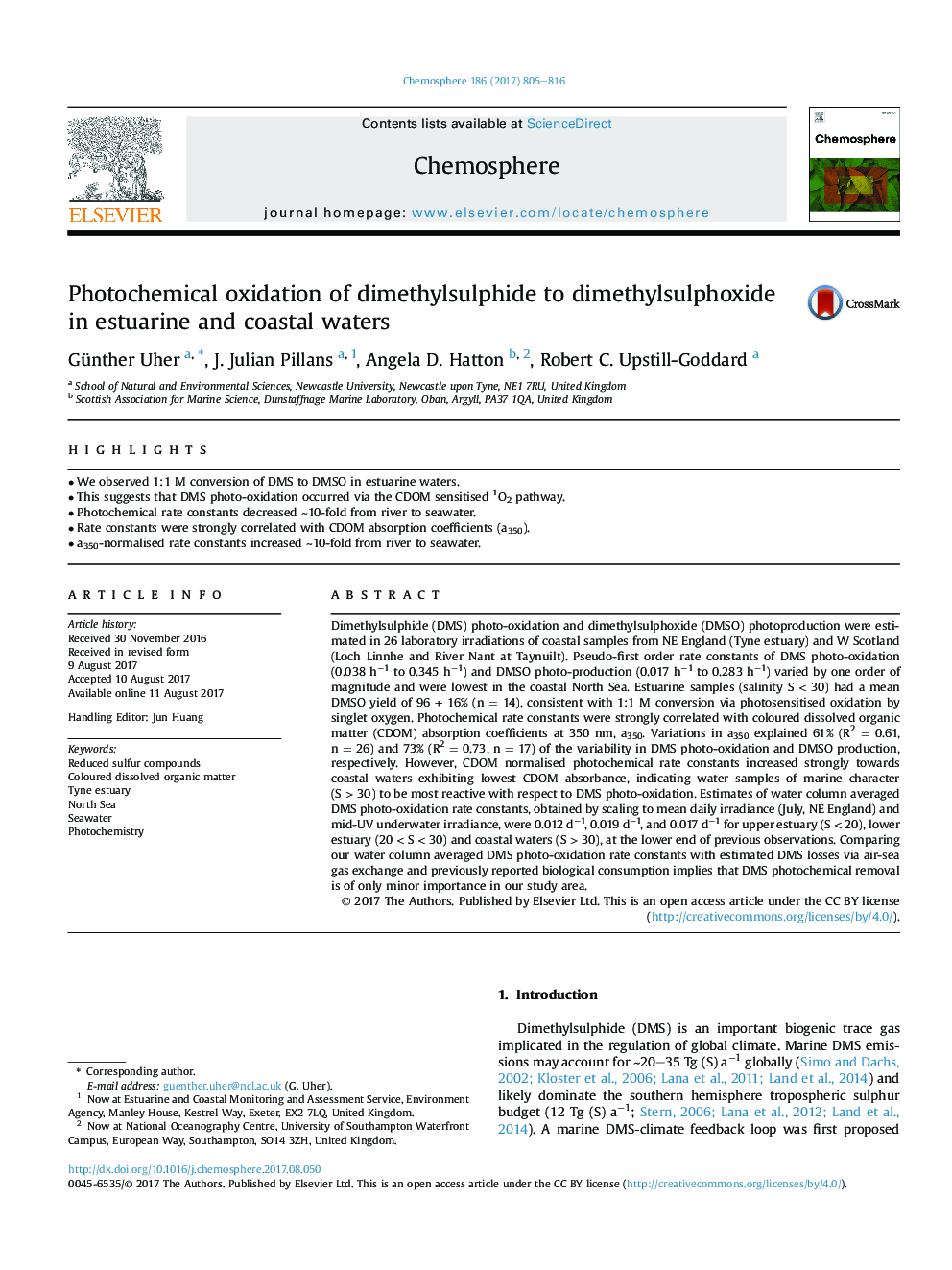| Article ID | Journal | Published Year | Pages | File Type |
|---|---|---|---|---|
| 5746038 | Chemosphere | 2017 | 12 Pages |
â¢We observed 1:1 M conversion of DMS to DMSO in estuarine waters.â¢This suggests that DMS photo-oxidation occurred via the CDOM sensitised 1O2 pathway.â¢Photochemical rate constants decreased â¼10-fold from river to seawater.â¢Rate constants were strongly correlated with CDOM absorption coefficients (a350).â¢a350-normalised rate constants increased â¼10-fold from river to seawater.
Dimethylsulphide (DMS) photo-oxidation and dimethylsulphoxide (DMSO) photoproduction were estimated in 26 laboratory irradiations of coastal samples from NE England (Tyne estuary) and W Scotland (Loch Linnhe and River Nant at Taynuilt). Pseudo-first order rate constants of DMS photo-oxidation (0.038 hâ1 to 0.345 hâ1) and DMSO photo-production (0.017 hâ1 to 0.283 hâ1) varied by one order of magnitude and were lowest in the coastal North Sea. Estuarine samples (salinity S < 30) had a mean DMSO yield of 96 ± 16% (n = 14), consistent with 1:1 M conversion via photosensitised oxidation by singlet oxygen. Photochemical rate constants were strongly correlated with coloured dissolved organic matter (CDOM) absorption coefficients at 350 nm, a350. Variations in a350 explained 61% (R2 = 0.61, n = 26) and 73% (R2 = 0.73, n = 17) of the variability in DMS photo-oxidation and DMSO production, respectively. However, CDOM normalised photochemical rate constants increased strongly towards coastal waters exhibiting lowest CDOM absorbance, indicating water samples of marine character (S > 30) to be most reactive with respect to DMS photo-oxidation. Estimates of water column averaged DMS photo-oxidation rate constants, obtained by scaling to mean daily irradiance (July, NE England) and mid-UV underwater irradiance, were 0.012 dâ1, 0.019 dâ1, and 0.017 dâ1 for upper estuary (S < 20), lower estuary (20 < S < 30) and coastal waters (S > 30), at the lower end of previous observations. Comparing our water column averaged DMS photo-oxidation rate constants with estimated DMS losses via air-sea gas exchange and previously reported biological consumption implies that DMS photochemical removal is of only minor importance in our study area.
